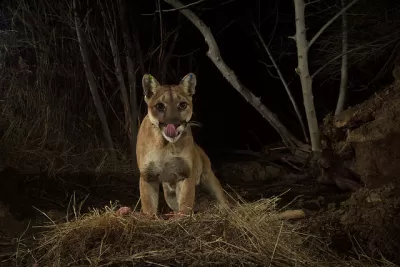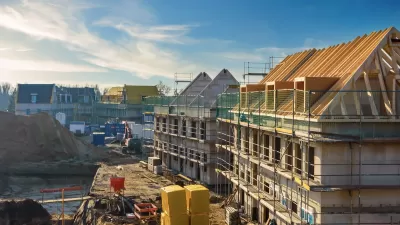Encouraging denser development in urbanized areas is an effective way to protect sensitive flora and fauna from human encroachment.

Protecting sensitive wildlife and building more housing don't have to be mutually exclusive, argues J.P. Rose, senior attorney at the Center for Biological Diversity. "For decades we have built in areas without careful consideration of how it affects wildlife. Sprawling overdevelopment has helped bring us to this extinction crisis — one in which the Quino checkerspot butterflies that once thrived in Southern California are now extremely rare and iconic mountain lions are suffering from inbreeding and genetic isolation."
But protecting wildlife doesn't have to come at the expense of affordable housing, a point brought into sharp relief in February, when the Northern California town of Woodside attempted to evade state housing mandates by designating the entire community as mountain lion habitat.
When my colleagues at the Center for Biological Diversity and I petitioned the California Fish and Game Commission to list Southern California and Central Coast mountain lions as a threatened species, we were not proposing to ban development throughout the state.
Instead, we wanted state officials to help these imperiled cats by building wildlife crossings, prohibiting rat poison use and factoring in how new development affects connectivity.
As Rose writes, the solution is infill development. "It’s time to stop seeing large swaths of open space as the best places to build. Cities and counties must steer development toward jobs and transportation centers to address the need for affordable housing. Focusing on wildlife-friendly infill development and building up, not out, is the thoughtful way to grow."
"In Ventura County, the board of supervisors passed two ordinances that increase protections for wildlife corridors by setting development standards and requiring environmental review for projects that block connectivity." Rose praises these ordinances, saying he hopes that similar policies will follow in more communities.
FULL STORY: Guest column: California has room for mountain lions and affordable housing

Planetizen Federal Action Tracker
A weekly monitor of how Trump’s orders and actions are impacting planners and planning in America.

San Francisco's School District Spent $105M To Build Affordable Housing for Teachers — And That's Just the Beginning
SFUSD joins a growing list of school districts using their land holdings to address housing affordability challenges faced by their own employees.

The Tiny, Adorable $7,000 Car Turning Japan Onto EVs
The single seat Mibot charges from a regular plug as quickly as an iPad, and is about half the price of an average EV.

Austin's First Single Stair Apartment Building is Officially Underway
Eliminating the requirement for two staircases in multi-story residential buildings lets developers use smaller lots and more flexible designs to create denser housing.

Atlanta Bus System Redesign Will Nearly Triple Access
MARTA's Next Gen Bus Network will retool over 100 bus routes, expand frequent service.

Toronto Condo Sales Drop 75%
In two of Canada’s most expensive cities, more condos were built than ever — and sales are plummeting.
Urban Design for Planners 1: Software Tools
This six-course series explores essential urban design concepts using open source software and equips planners with the tools they need to participate fully in the urban design process.
Planning for Universal Design
Learn the tools for implementing Universal Design in planning regulations.
Smith Gee Studio
City of Charlotte
City of Camden Redevelopment Agency
City of Astoria
Transportation Research & Education Center (TREC) at Portland State University
US High Speed Rail Association
City of Camden Redevelopment Agency
Municipality of Princeton (NJ)





























